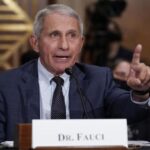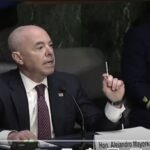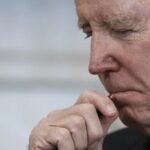 He has written several books. His story was told by his wife and others at the Democratic National Convention. The media portray him as a man who rose from nothing to become president of the United States. But is Barack Obama’s story real? An in-depth report now shows that much of what Obama has said or what the media have said about his past is not quite accurate… to say the least!
He has written several books. His story was told by his wife and others at the Democratic National Convention. The media portray him as a man who rose from nothing to become president of the United States. But is Barack Obama’s story real? An in-depth report now shows that much of what Obama has said or what the media have said about his past is not quite accurate… to say the least!
The Washington Examiner has released a stunning analysis which compares the claims and stories regarding Barack Obama’s childhood and early political life with what actually occurred.
In an effort to get a clearer picture of Obama — his shaping influences, his core beliefs, his political ambitions and his accomplishments — The Washington Examiner conducted a four-month inquiry, interviewing dozens of his supporters and detractors in Chicago and elsewhere, and studying countless court transcripts, government reports and other official documents.
Over the years and in two autobiographies, Obama has presented himself to the world as many things, including radical community organizer, idealistic civil rights lawyer, dynamic reformer in the Illinois and U.S. senates, and, finally, the cool presidential voice of postpartisan hope and change.
But beyond the spin and the polls, a starkly different picture emerges. It is a portrait of a man quite unlike his image, not a visionary reformer but rather a classic Chicago machine pol who thrives on rewarding himself and his friends with the spoils of public office, and who uses his position to punish his enemies.
It has been repeated many times that Barack Obama came from poor means. That he grew up under hardship. Even Michelle Obama mentioned it in her speech on national television during the convention. Michelle Obama said she and Barack Obama “were both raised by families who didn’t have much in the way of money or material possessions.”
Didn’t have much in the way of money or material possessions? Let’s take a look at what The Washington Examiner found:
Obama’s mother met her second husband, an Indonesian named Lolo Soetoro, while working at the East-West Center in Hawaii. They married, and in 1967, the young Obama, then known as Barry Soetoro, traveled to Indonesia with his mother when the Indonesian government recalled his stepfather.
In Indonesia, the family’s circumstances improved dramatically. According to Obama in his autobiography “Dreams from My Father,” Lolo’s brother-in-law was “making millions as a high official in the national oil company.” It was through this brother-in-law that Obama’s stepfather got a coveted job as a government relations officer with the Union Oil Co.
The family then moved to Menteng, then and now the most exclusive neighborhood of Jakarta, where bureaucrats, diplomats and economic elites reside.
After his time in Indonesia, Obama then moved to Hawaii. Was that a “rough” life too?
In 1971, his mother sent young Obama back to Hawaii, where his grandmother, Madelyn, known as Toots, would become one of the first female vice presidents of a Honolulu bank. His grandfather was in sales.
Obama’s grandparents moved the same year into Punahou Circle Apartments, a sleek new 10-story apartment building just five blocks from the private Punahou School, which Obama would attend from 1971 to 1979.
Another interesting finding from The Examiner’s investigation was Obama’s time as a lecturer at the University of Chicago Law School. As noted in a Time Magazine piece in 2008, “Within a few years, he had become a rock-star professor with hordes of devoted students.” A rock star? Really? Let’s look at the facts:
In 1999, only 23 percent of the students said they would repeat Obama’s racism class. He was the third-lowest-ranked lecturer at the law school that year. And in 2003, only a third of the student evaluators recommended his classes.
His classes were small. A spring 1994 class attracted 14 out of a student body of 600; a spring 1996 class drew 13. In 1997, he had the largest class of his tenure with 49 students. But by then, his student rating had fallen to 7.75. Twenty-two of 40 faculty members ranked higher than Obama.
Some former faculty colleagues today describe Obama as disengaged, doing only what was minimally required and almost never participating in faculty activities.
Also at odds with reality is the notion that Barack Obama was dedicated to helping the poor and underprivileged. As noted time and again in The Washington Examiner investigation, Obama was more likely to seek out the rich and powerful and simply use the poor for his own advancement.
In March 1994, a year before “Dreams” was published, Obama was the lead defense attorney on an obscure case in Cook County Court that has heretofore escaped examination by the national media.
In this case, Obama defended a Chicago slumlord and powerful political ally who was charged with a long list of offenses against poor residents. The defendant was the Woodlawn Preservation & Investment Corp., controlled by Bishop Arthur Brazier, a South Side Chicago preacher and political operator.
Just look at what this guy did! And it was Barack Obama who was defending him.
Brazier’s WPIC had failed for nearly a month to supply heat and running water for the complex’s 15 crumbling apartments. On Jan. 18, 1994, the day the heat went off, Chicago’s official high temperature was 11 below zero, the day after it was 19 below.
Even worse, the residents were then ordered to leave the WPIC complex in the winter chill without the due process they would have been afforded by an eviction procedure.
In the end, Brazier’s company was only fined $50, and as The Examiner notes, “Only then did Obama tell the court of the forcible removal of tenants in the bitter cold.”
There is so much more that people don’t know about Barack Obama. This is just the tip of the iceberg. But it’s an iceberg that the national media do not want to touch. It’s up to all of us to get the message out and let people know that Barack Obama is all about power… and not “power to the people,” but power to himself and his cronies.















Recent Comments